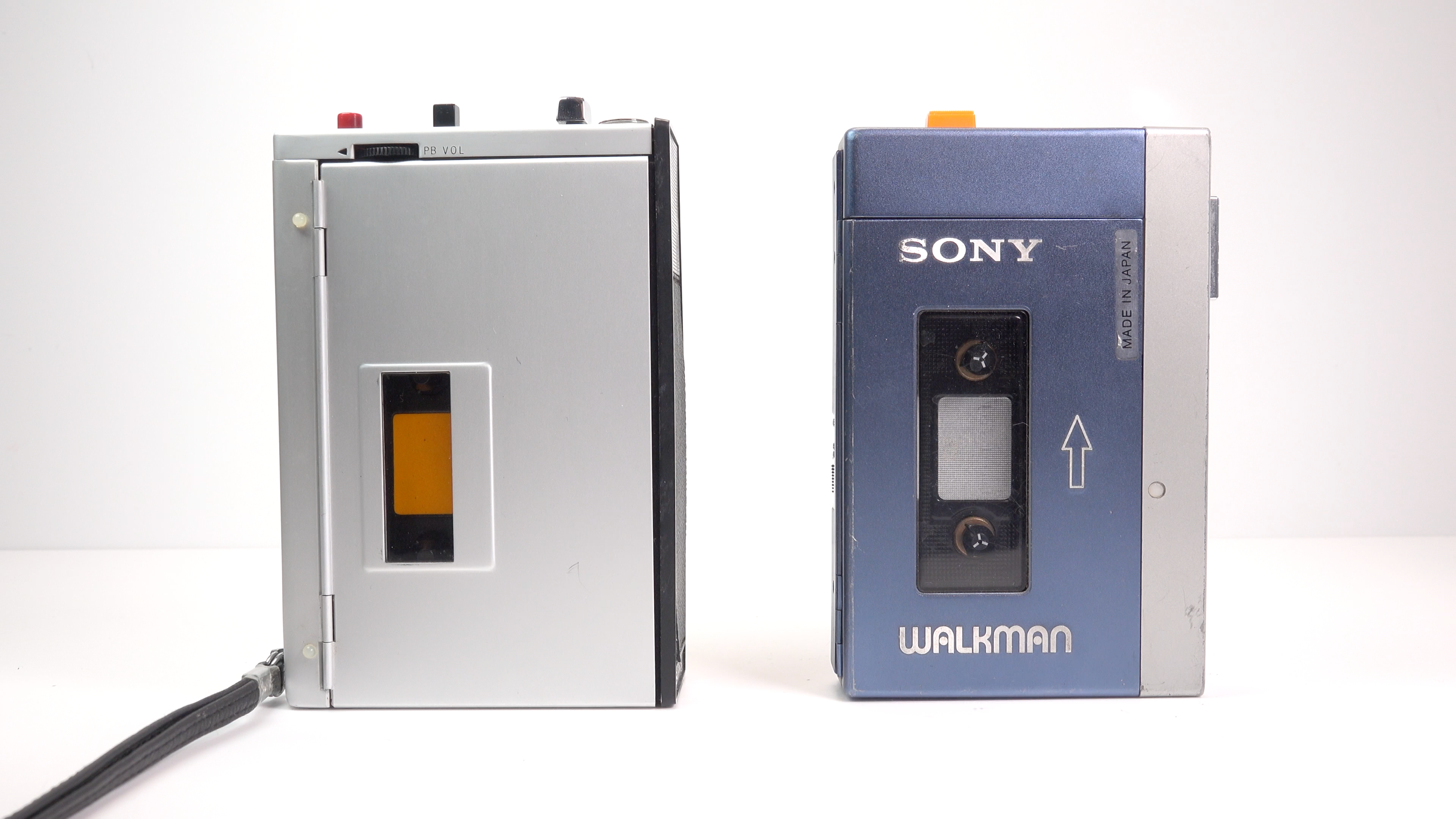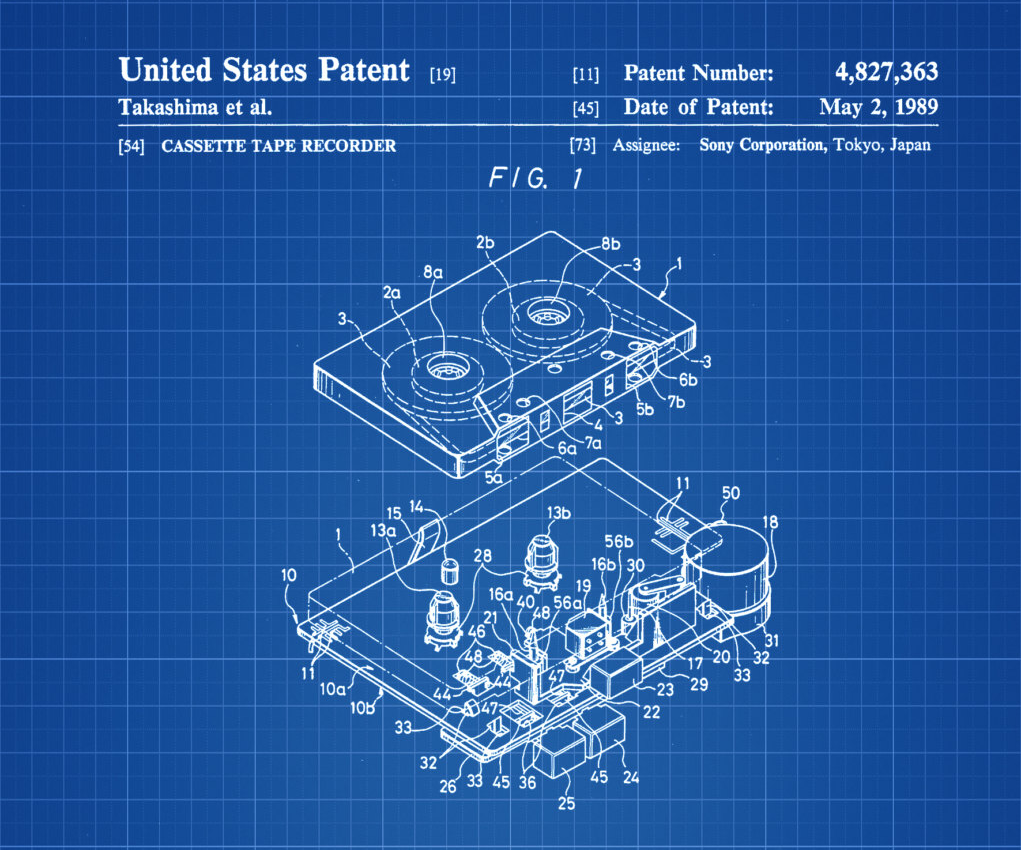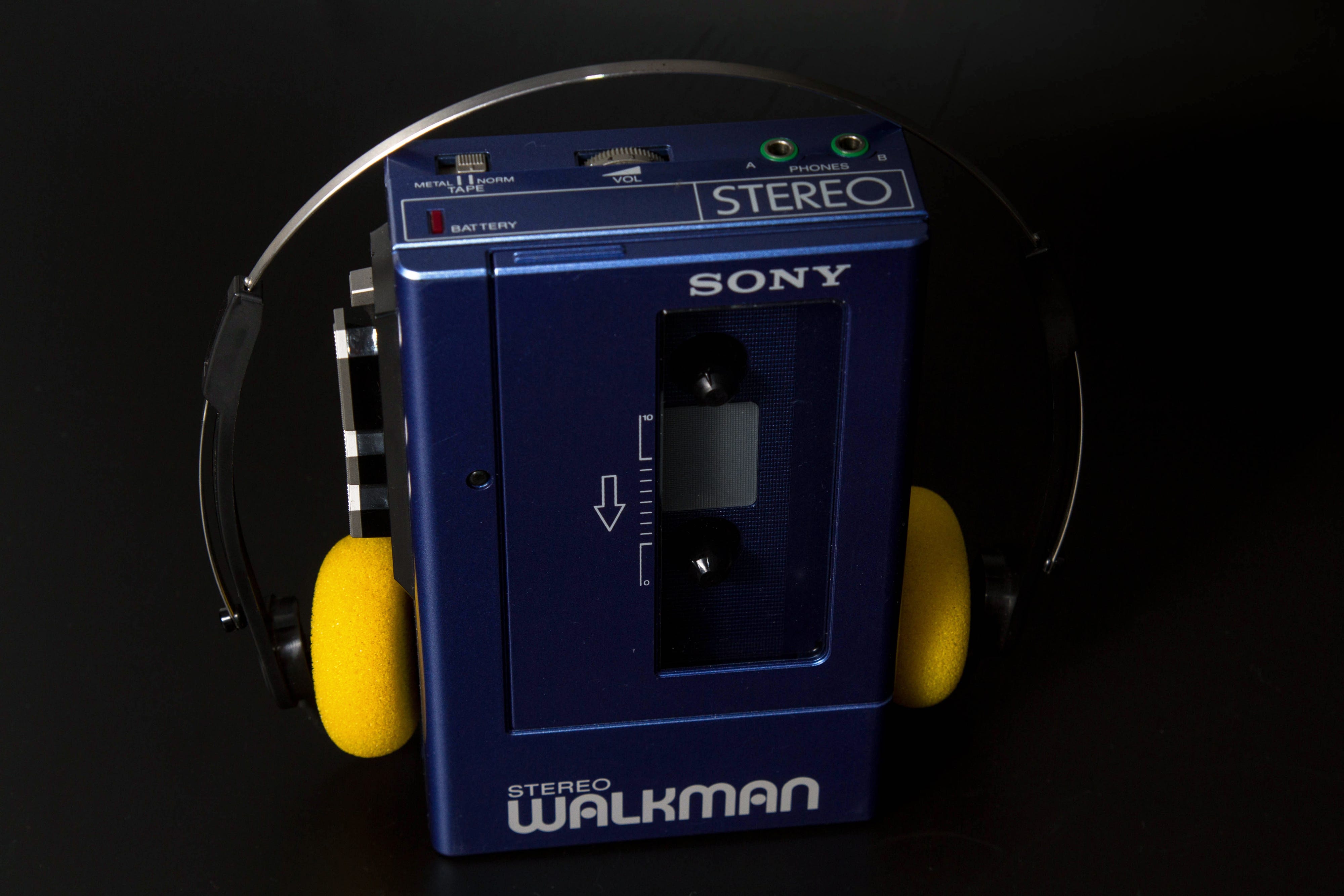UX inspiration from history: Sony Walkman
Today, many of us know the story of the Sony Walkman brand and how it influenced many other products in the 21 century. It was one of the first models of portable players to change the way people listen to music.

The story of the classic Walkman ended in 2010 when Sony retired the cassette player. Sony sold around 200 million cassette players, and the total number for all devices under the Walkman brand is around 400 million. This number may sound unreal for cassette players, but this device literally changed the industry and set the standard for future music players.
This player made a revolution in the world of non-portable devices. Before Walkman, you simply couldn’t listen to music on the go, only at home, using a giant audio system with big headphones. From now on, with music in your ears, everything around you has been filled with new meaning.
Initial creation, processes, and inside stories about the player
The initial development of the Walkman prototype began in 1978. The company used the semiprofessional recorder Sony Pressman TCM-100 model (dedicated for business usage) as a base for a new device.
Initially, the dev team had several features on its roadmap: portability, recorder, speaker and high-q2uality sound.
The development team quickly realized that they had to rethink a player from scratch to insert a high-quality recording mechanism. The first element they started working on is the actual playing mechanism. The final result turned out so good that Sony realized they could offer the device to music lovers.
Unfortunately, they couldn’t accommodate all features inside this small metal rectangle at that time, so they had to ditch the recording feature and the speaker in favour of high-quality sound and the lightweight of the player.

What can we learn here? The first thing is understanding the value you want to bring with your new product. Sometimes you just technically cannot implement all planned features because of the different circumstances.
The Sony team decided to start with excellent sound quality and portability that would allow people to carry players with them everywhere, and this strategy worked.
Instead of a recording feature, they decided to reuse a microphone for a “Hotline” feature. It added sound from the microphone while you were listening to music for communication with people. Today, a lot of Bluetooth headphones are using similar techniques.
The player was mainly built out of metal, painted in blue-and-silver colour. It came along with one pair of stereo headphones, Sony H-AIR MDR3, created alongside the Walkman by a different team. Also, it had a second earphone jack so that two people could listen simultaneously, but it was removed in later versions.

Design of the player
If you compare the design of Sony’s first portable recorder and the first Walkman, you will see a lot of similarities. Walkman’s form (almost a cassette size), placement of buttons and overall look were all inherited from this recorder.
The original idea to make the player in a form of a cassette came to life during the development of the first portable recorder produced by Sony, TC-50, presented to people in 1968.

Even at a glance, it definitely looks like a grandfather of the Walkman. Let’s dive deeper into Walkman’s design.

Buttons and sliders
On the first image, we have a top view of the player with a “Hotline” button, two 3.5mm headphone jacks, so people could listen to music in pairs and an operation indicator.
Much more is going on the side of the player: a microphone that’s activated by the “Hotline” button, stop/eject button, two buttons to fast forward/backward and a play button.
One of the most interesting elements on this side is a volume controller. Technically, two-channel volume controllers are responsible for left and right channels separately. The only explanation I could find on the internet as to why Sony used two controllers instead of one is: back in the days, powerful miniature stereophonic potentiometers were not yet produced, so they had to use two mono sliders.

Every button and slider has a pattern on top of it for a better grip. Moreover, every button has a different size, so it’s much easier to control music without taking a player out of your pocket.
There is a “pocket” for a cassette on the player’s front side, with transparent plastic to ensure you can see what cassette is inside and how much music is left till the end.
Today, a blue rectangle with an orange “hotline” button is recognized worldwide, and back in the days, it was a truly revolutionary product.
The role of the design department at Sony
The Sony Walkman player’s development wasn’t regular if you compare it to today’s development cycle at startups. If you work in the tech industry, you know that usually, before something gets to the design department, it has to go through many other teams first.
Here is how significant the role of the design department was during the creation of Walkman:
“The role of the Design Centre in creating the WM-2 indicates the important position that design occupies within Sony. Rather than simply developing ideas and specifications of engineers and others, the Design Centre was the initiator of the entire product concept. According to the former head of design at Sony, Yasuo Kuroki, the Design Centre was not limited to look and shape. The whole concept — how a product sold, how a product is marketed, how a product is advertised — really developed in here. In this way, design at Sony does not just “add value” to existing technology, but has been a fundamental element of product innovation, linking the complex worlds of production and consumption”
Unfortunately, that’s not the way today’s companies like to work. Even though we see many positive changes globally, many companies outside Silicon Valley still treat design as an afterthought.

During the development of the Walkman-2 (1981), Sony used the design-first approach, so engineers had to work within specifications of the body, buttons and switches defined by the design team.
Sony always stayed close to the customer. They had showrooms located around the world. Paris, Tokyo, Chicago, and some other cities are where Sony kept their showrooms with additional playgrounds and research&development labs. These places helped a lot in forming the final look and feel of Sony’s products.
The release of the player, attention from the market, popularity.
On July 1, 1979, the first version of cassette player Sony Walkman TPS-L2 was released. Initially, Sony was selling the player in Japan only. The Walkman player surpassed all expectations and has sold around 30,000 items in less than two months.
Production could not cope with the emerging demand for the player. The distribution of the Walkman has been unprecedented in marketing history. It has changed youngsters’ lifestyle, creating a new culture and an entirely new market.
The popularity of Walkman players was so significant that in 1982 in Woodbridge town, New Jersey, the government passed a ban on wearing headphones in public places, on the streets and during cycling due to pedestrian accidents happening in the town.

Summary
Sony Walkman was one of the products that have changed the way we perceive the world, build products and listen to music. This player was mentioned literally everywhere: in movies, magazines, newspapers, music compositions etc.
I bet you owned (or you know a person who owned) one of many variations of the Walkman players.
The Walkman’s design passed the test of time and became a classic; even in 2021, the player looks and feels excellent, combining the heritage of Japanese culture with fantastic quality.

Resources
Doing Cultural Studies: The Story of the Sony Walkman (2nd edition) — by Paul du Gay, Stuart Hall, Linda Janes, Anders Koed Madsen, Hugh Mackay, Keith Negus
Digital Dreams: The Work of the Sony Design Center — by Paul Kunkel
Iconic Designs: 50 Stories about 50 — edited by Grace Lees-Maffei
A Brief History of The Walkman — TIME by Meaghan Haire
The one who started it all… — Hugo Rodriguez

